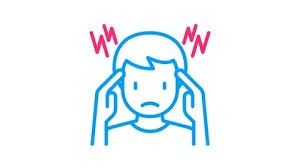Finding Relief: Understanding and Treating Migraines Effectively


What Are Migraines and Why Do They Happen?
Have you ever experienced a severe headache accompanied by nausea, sensitivity to light, and vision changes? You might be suffering from a migraine.
Migraines are more than just bad headaches. They are a neurological disorder that affects millions of people worldwide, interfering with daily life and productivity. Understanding the root cause of migraines can help in managing and treating them more effectively.
- Migraines are often caused by abnormal brain activity.
- Triggers may include stress, hormonal changes, lack of sleep, or certain foods.
- Genetics also play a significant role—if a parent has migraines, there's a higher chance their children might, too.
- The condition is more common in women than men, especially between the ages of 15 and 55.
- Migraines may last for hours or even days if left untreated.
Understanding the biological and environmental factors that contribute to migraines is essential in choosing the right treatment path.
Common Migraine Symptoms You Shouldn't Ignore
How do you know it's a migraine and not just a regular headache?
Migraine symptoms can vary from person to person, but there are some key signs that distinguish migraines from ordinary headaches.
- Pulsating or throbbing pain, usually on one side of the head.
- Nausea or vomiting during the headache.
- Sensitivity to light, sound, and smells.
- Visual disturbances, also known as aura, which may include flashing lights or blind spots.
- Dizziness, fatigue, and difficulty speaking.
Recognizing these symptoms early can help in starting treatment sooner, potentially reducing the severity and duration of the migraine.
What Triggers a Migraine Episode?
Can avoiding certain triggers reduce the chances of getting migraines?
Yes, identifying and avoiding migraine triggers is one of the most effective ways to prevent future attacks. While triggers vary, some are more commonly reported than others.
- Emotional stress or anxiety.
- Bright or flashing lights.
- Hormonal changes in women, such as during menstruation or pregnancy.
- Caffeine withdrawal or excessive caffeine intake.
- Skipping meals or irregular sleep patterns.
- Certain foods such as aged cheeses, processed meats, and chocolate.
By maintaining a migraine diary, patients can track patterns and recognize what situations or items contribute to their migraine episodes.
Natural and Lifestyle Approaches to Migraine Prevention
Are there non-medication ways to manage and prevent migraines?
Absolutely. Many individuals find significant relief from migraines through lifestyle changes and natural remedies. These approaches can work alongside medication or sometimes even reduce the need for it.
- Getting regular, quality sleep every night.
- Staying hydrated and eating balanced meals.
- Practicing relaxation techniques like yoga, meditation, or deep breathing.
- Regular physical activity to improve overall well-being.
- Limiting screen time and using blue light filters.
- Applying cold or warm compresses to the head or neck.
While natural remedies may not cure migraines entirely, they can lessen the frequency and intensity of attacks when incorporated into a daily routine.
Medical Treatments and Prescription Options
What medical treatments are available for migraine relief?
Medical treatments are often necessary for individuals who experience frequent or debilitating migraines. Depending on the severity, doctors may prescribe preventive medications or abortive treatments that stop migraines once they start.
- Over-the-counter pain relievers like ibuprofen or acetaminophen.
- Prescription medications such as triptans, beta-blockers, or antidepressants.
- Anti-nausea drugs to help with vomiting and queasiness.
- Botox injections for chronic migraines.
- CGRP inhibitors, a newer class of drugs specifically targeting migraine pathways.
Always consult a healthcare provider before starting any medication regimen to ensure the best treatment plan based on individual needs.
Imitrex (Sumatriptan): A Powerful Ally Against Migraines
Is there a specific medication that effectively treats migraines once they start?
Yes. Imitrex (Sumatriptan) is a well-known prescription medication that belongs to a class of drugs called triptans. It is specifically designed to treat migraines by narrowing blood vessels around the brain and reducing substances that trigger headache pain, nausea, and sensitivity to light and sound.
- Available in various forms: tablets, nasal spray, and injections.
- Works best when taken at the first sign of a migraine.
- Fast-acting relief that can restore daily function.
- Often prescribed when over-the-counter medications fail to provide relief.
Why Choose Imitrex for Migraine Treatment?
Imitrex is not a preventive treatment; it is designed for immediate relief during a migraine episode. Many patients report significant improvement within hours of taking it. While side effects can include dizziness or fatigue, the benefits for many outweigh the risks. It is a trusted option in managing severe migraines and is widely recommended by healthcare providers.
Managing migraines is a lifelong journey that often involves a mix of lifestyle adjustments, avoidance of triggers, and appropriate medications. While every patient’s experience with migraines is different, having a solid understanding of the condition and available treatment options—including powerful medications like Imitrex—can make a meaningful difference in quality of life. Recognizing symptoms early and working closely with a healthcare provider are key steps to living with fewer interruptions from migraine attacks.
Article Post: Editorial Team of RXShop.md
(Updated at May 30 / 2025)

